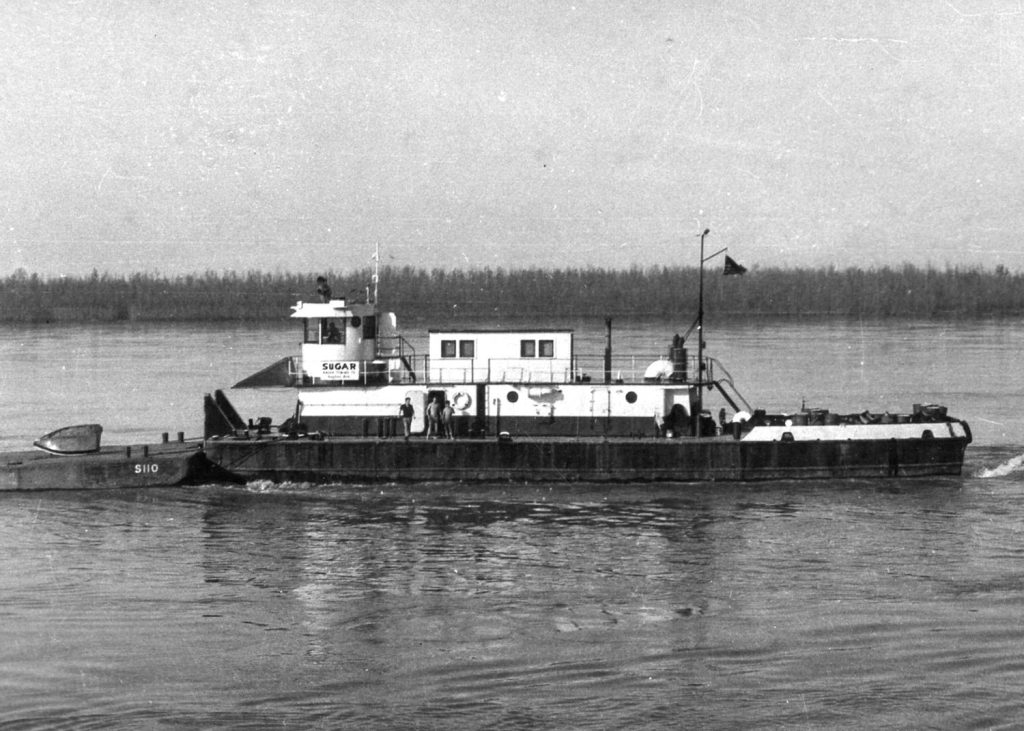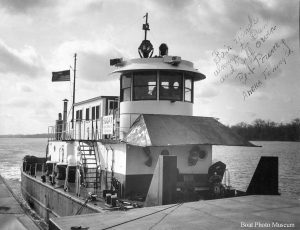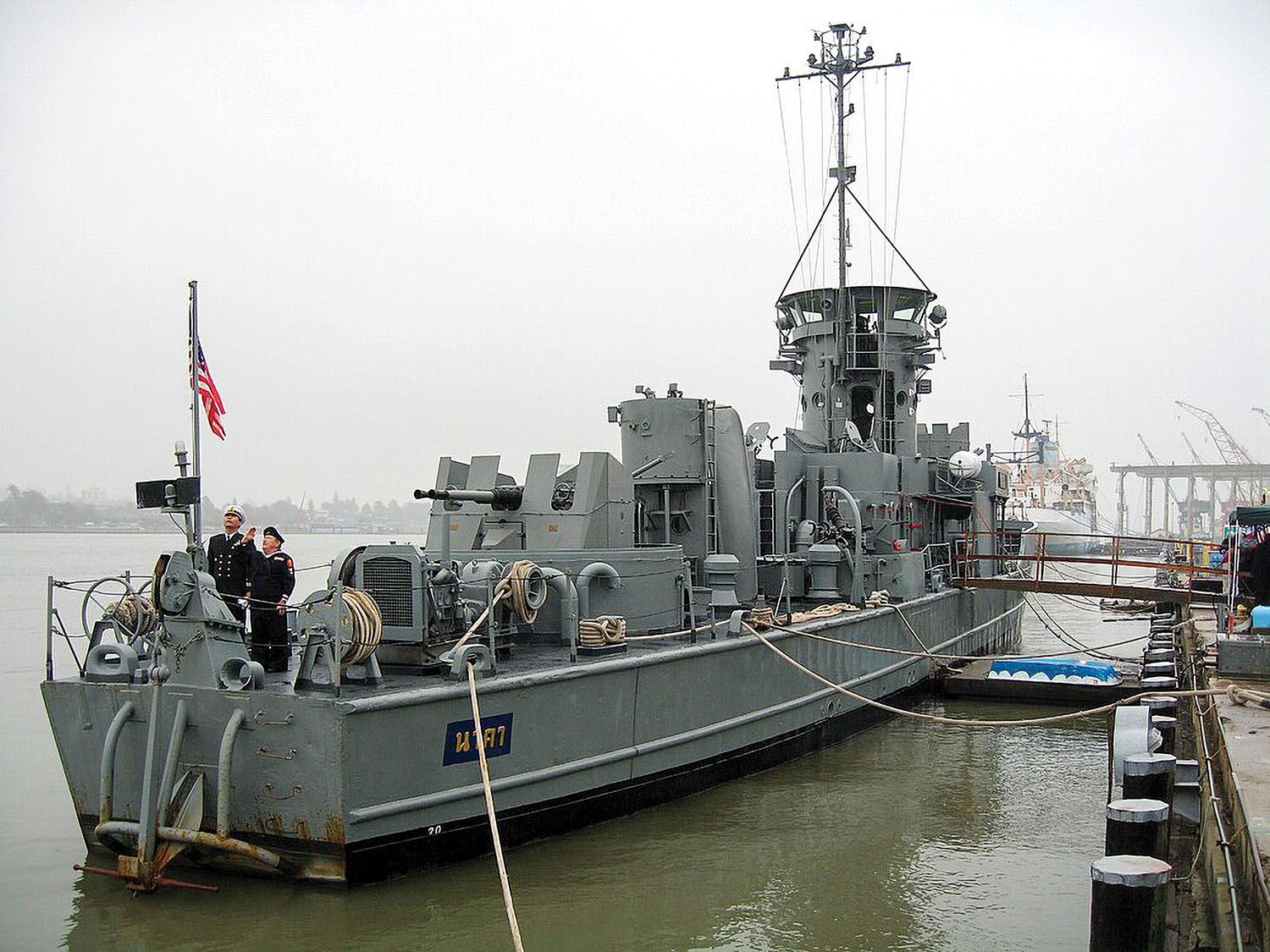In the years following World War II, there were several former military craft converted into river towing vessels. In thinking about the Gulf Intracoastal Waterway issue, this week’s subject came to mind. It began life in an East Coast shipyard and was converted to towing in the Gulf area. What resulted was one of the oddest towboats seen on the Western Rivers.
The LCS 121 was built for the U.S. Navy by George Lawley & Sons Shipbuilding, Neponset, Mass., in 1944. The “LCS” stood for Landing Craft Support. A total of 130 were built, with hulls 158.5 feet by 23 feet 3 inches. The operating draft was just under 6 feet. They were powered by two sets of GM 6-71 quad units coupled to the twin variable-pitch propellers. The generators and an auxiliary winch engine were also GM 6-71-powered, so spare parts could be kept at a minimum. There was very little superstructure, but a cylindrical pilothouse had a conning tower above it.
These small ships were built for the specific purpose of providing firepower support for troops landing on beach heads. The LCS class had armament that provided more firepower per ton than any other ships in the Navy. Since they were expected to operate close in to the shore, they were built with flat bottoms and skegs on each side of the props for protection. The crew complement was up to six officers and 68 enlisted men. The craft were capable of speeds up to 16.5 knots and had a range of 5,500 miles. Actual construction of the vessels could be accomplished in as little as 10 days, with outfitting taking an additional few weeks.
According to government records, the LCS 121 was ordered on June 5, 1944, laid down on November 7, launched on November 16 and commissioned on December 1. It was sold at auction on December 14, 1950. The buyer was C.C. Northon of Star Towing Company, New Orleans. Calmes Engineering Company of New Orleans did the conversion work. Approximately 55 feet of the forward portion of the hull was removed, and a square raked bow with tow knees was fabricated. A small cabin was on the main deck, and above that, positioned forward, was the original cylindrical pilothouse, now sporting windows rather than portholes. Another small cabin of apparent wooden construction was located aft of the pilothouse. Final hull dimensions were 104.8 feet by 23.4 feet.
During the conversion work the boat was sold to Anoka Towing Company, Hughes, Ark. Listings in the Inland River Record show the company as being owned by Bert C. Pouncey of Anoka Farms. The name placed on the converted craft was Sugar. It may have entered service with the original GM 6-71 quad units, but the first listing for the Sugar in the 1953-1954 edition of the IRR shows it powered by a pair of Caterpillar D397 diesels totaling 900 hp. that had been installed in March 1952 at the Arnold V. Walker Shipyard at Pascagoula, Miss. Falk gears of 2.81:1 reduction were installed as well.

Typically towing a two-piece tank barge unit, the Sugar then became a widely traveled vessel. Photos show it at Keokuk, Iowa, Pittsburgh, Pa., and transiting the Lower Mississippi River. Interestingly, none of these photos show any evidence of the boat having a radar aboard. Retired marine surveyor Capt. Bill Judd of New Richmond, Ohio, says that he vividly remembers the Sugar, and how odd it looked. He also recalls that it was essentially towing in the same trade as an open-water-type tug named Tickfaw that had been built in 1900.
J. Mack Gamble would mention the Sugar in his Upper Ohio News column in The Waterways Journal whenever the unusual vessel would make an appearance in the upper reaches of the Ohio. He did so in the February 4, 1956, issue of the WJ, with a sub header stating “Sugar Coming.” The column noted that the boat had been up at Parkersburg, W.Va., on January 28 with three loads.

The late Dan Owen, later long-time editor with the WJ and the IRR, was a young man growing up in East Liverpool, Ohio, during the time the Sugar was operating. He and his brother Jeff took and/or collected photos of boats and must have contacted Mr. Pouncey about the Sugar. In Dan’s Boat Photo Museum collection is a photo of the boat underway with a notation penned on it “Fair winds always to Dan and Jeff Owen. Bert Pouncey, Anoka Towing Co.”
The Sugar was last listed in the 1959 edition of the Inland River Record. The 1960 edition made no mention of the boat, even in the “Off The Record” section. A search of the List of Merchant Vessels shows that it had been sold to Venezuela in 1957.




